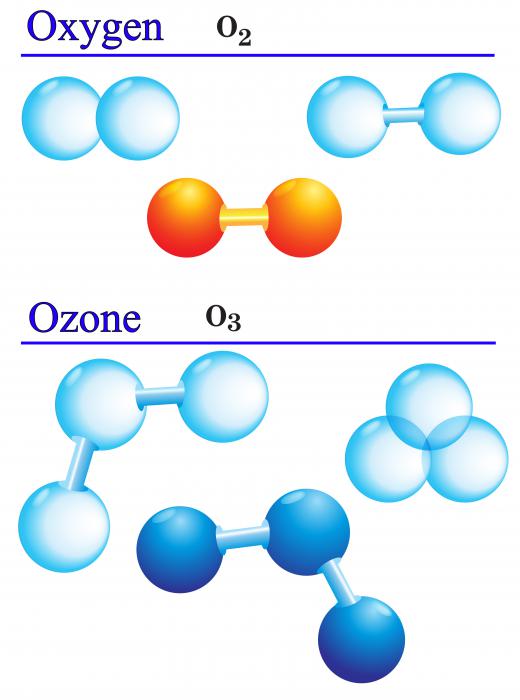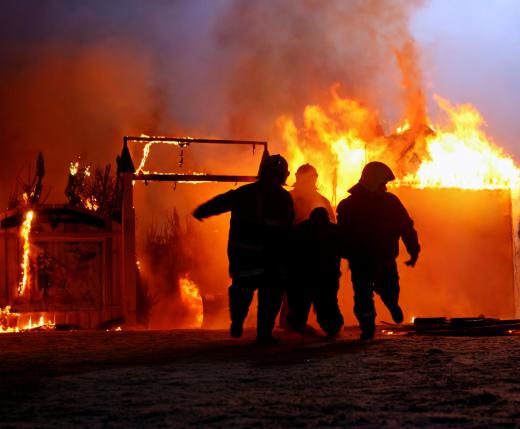What Is an Oxidizing Agent?
In oxidation and reduction chemistry, an oxidizing agent is a substance that is reduced in a chemical reaction, thereby causing another substance to be oxidized. Common oxidizing agents include oxygen (O2), which provides the origin of the term "oxidation", hydrogen peroxide (H2O2), ozone (O3) and the halogen gases. Oxidizing agents, also known as oxidants, are used in a wide variety of industries and products ranging from chemical manufacturing and explosives to cleaning solutions, antiseptics and special effects devices.
Oxidation and reduction chemistry, sometimes known as redox chemistry, is the study of chemical reactions by which electrons are moved from one chemical species to another. In such a reaction, the reducing agent undergoes a loss of electrons and is oxidized, while the oxidizing agent gets more electrons and is reduced. The mnemonic device OIL RIG, standing for "Oxidation Is Losing (electrons), Reduction Is Gaining (electrons)," is often used by chemistry students to differentiate between the two. Traditionally, the oxidizing agent was thought to be a chemical that either contributed oxygen or extracted hydrogen, but the surest definition is that an oxidizing agent gains electrons and is reduced in the reaction.

The strength of an oxidizing agent can be estimated by several factors. Typically, compounds with high oxidation states, such as nitrates (NO3-), permanganates (MNO4-) and chromates (CrO42-) are good oxidizers. As a general rule of thumb, good reducing agents are poor oxidizing agents, and good oxidizing agents are poor reducing agents. Another way to estimate the relative strength of an oxidant is to determine its standard electrode potential, measured in volts. High potentials in the cathode half reaction typically correspond to higher oxidizing strengths.

Oxidants are widely used in a number of industries, ranging from chemical manufacturing to those that make cleaning solutions and solvents, fireworks and explosives, and special effects. Solutions of sodium hypochlorite (NaClO), more commonly known as bleach, are commonly used in household cleaning applications for their ability to remove stains. Fireworks, a common sight at outdoor nighttime celebrations, utilize strong oxidizers to help create terrific explosions. In the special effects industry, oxidants can be used to give new furniture a worn, antique look.

When working with oxidizing agents, it is extremely important for a chemist or student to be mindful of the potential for explosions and fire hazards. Extremely strong oxidizers such as fluorine gas can react violently with reducing agents and corrode laboratory equipment. Enriched oxygen atmospheres or pure oxygen streams also can present fire hazards in the laboratory. Most materials that pose a threat as strong oxidizers come with a warning or are designated as such in the U.S. by the letters OX in the special hazards section on the label's National Fire Protection Association (NFPA) diamond.
AS FEATURED ON:
AS FEATURED ON:













Discuss this Article
Post your comments